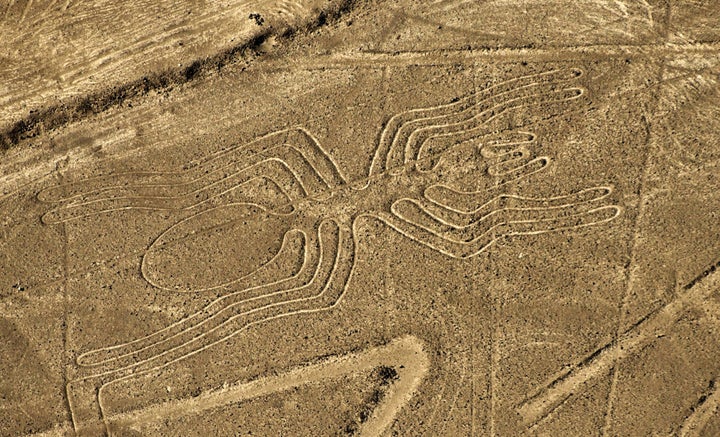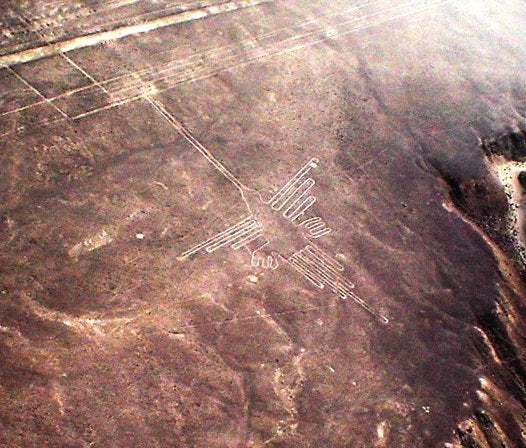
A truck driver is accused of ignoring warning signs and carelessly plowing across Peru’s famous Nazca Lines on Saturday, causing significant damage to the estimated 2,000-year-old archeological wonder, authorities said.
The UNESCO World Heritage Site, which features massive geoglyphs of animals, plants and various creatures that are seen from the air, was left with deep tire marks when the big rig left the road. The culture ministry released a photo showing the damage.
A video posted on Facebook also shows the vehicle parked off of the road and surrounded by various tire tracks, CNN reported.
The ancient designs surrounding the vehicle, which collectively cover 280 square miles, are touted on UNESCO’s website as being “the most outstanding group of geoglyphs anywhere in the world and are unmatched in its extent, magnitude, quantity, size, diversity and ancient tradition to any similar work in the world.”
According to Argentine newspaper Clarín, cited by NPR, the driver defended his action, saying that he wasn’t familiar with the area and that he only left the road because of a mechanical problem.
The paper speculated, however, that he may have left the road in an attempt to avoid paying a highway toll.

Local news site Peru21 identified the driver as 40-year-old Jainer Jesús Flores Vigo and said that he was only briefly detained as there wasn’t enough evidence to prove that he acted with intent.
Prosecutors for the public ministry say they will pursue charges.
Though the ancient artwork is estimated to be thousands of years old, it continues to puzzle and amaze observers as the exact reason for its creation is uncertain ― though UNESCO’s website notes that the geoglyphs are believed to have had ritual astronomical functions.
One recent example of its ability to surprise was in 2014, when a pilot discovered previously unknown geoglyphs across the land after sandstorms unveiled them.
This wasn’t the first time people have harmed the historic artwork, however.
In 2017, Greenpeace activists damaged some of the land when they pulled a publicity stunt in a protected area near an etched hummingbird figure. That act involved placing giant letters across the land, spelling out a message for their organization.
Simply walking on the land without special footwear will leave permanent scarring, the country’s deputy culture minister, Luis Jaime Castillo, said at the time of the incident.
“They are absolutely fragile,” he told the Associated Press. “They are black rocks on a white background. You walk there and the footprint is going to last hundreds or thousands of years. And the line that they have destroyed is the most visible and most recognized of all.”

